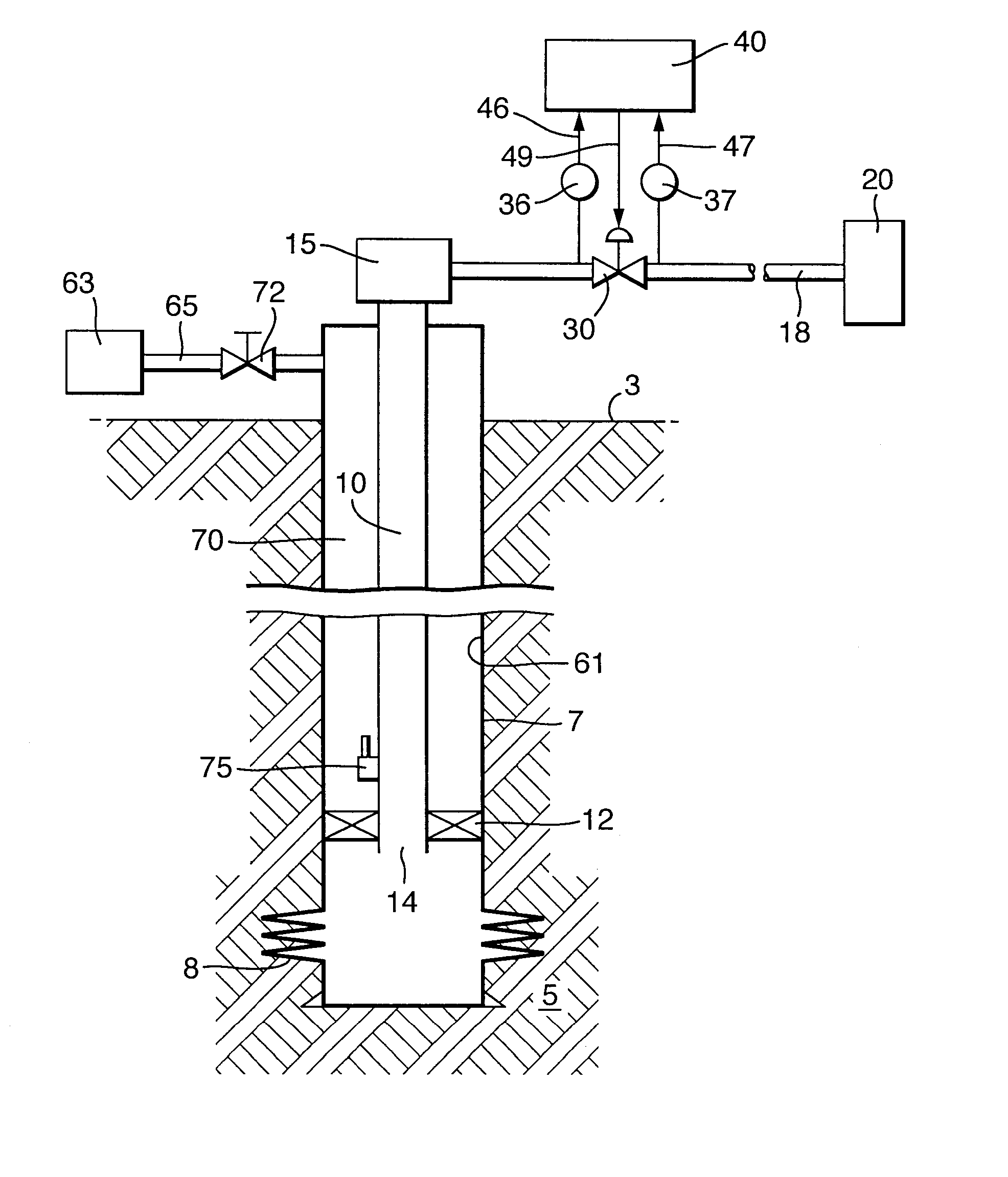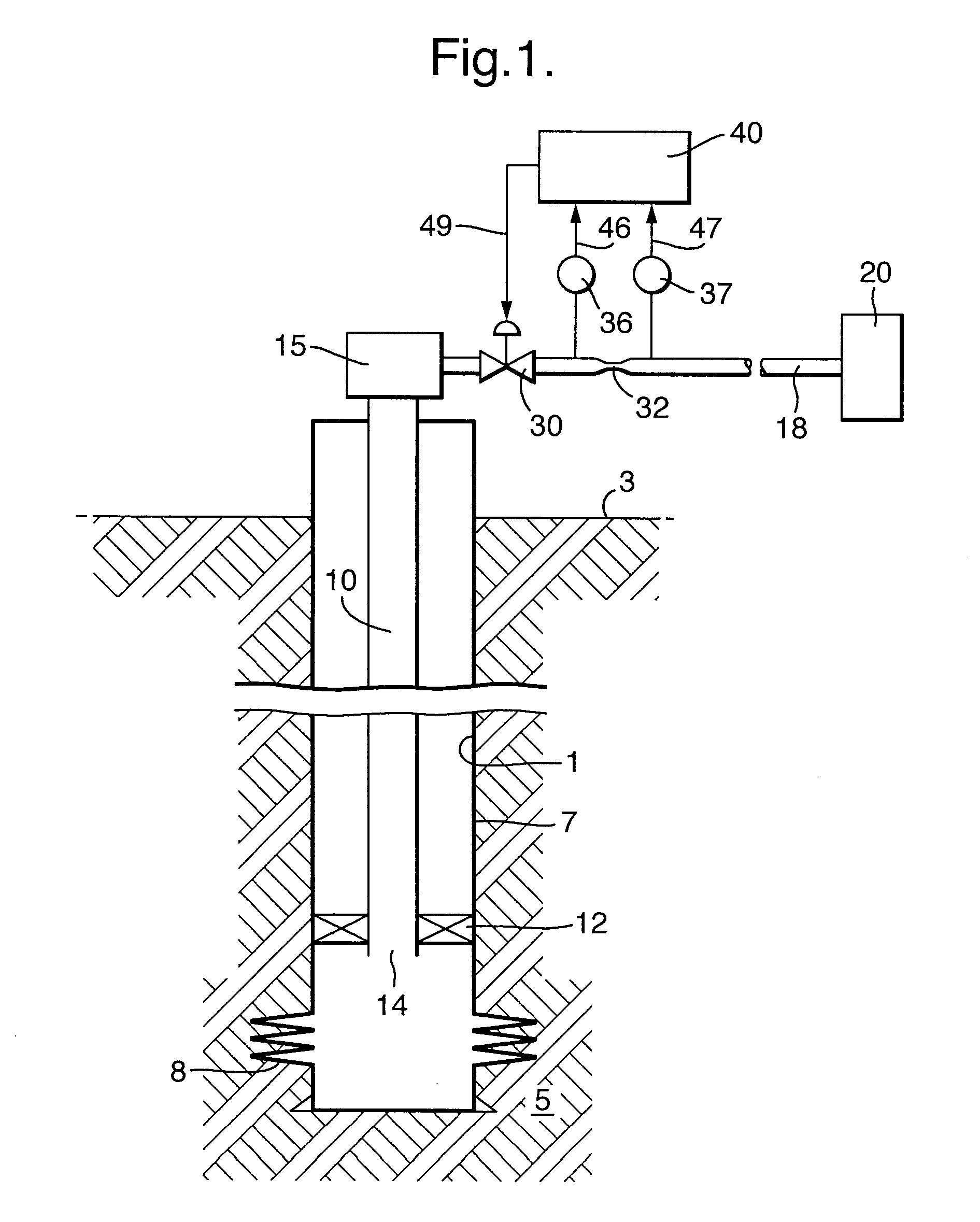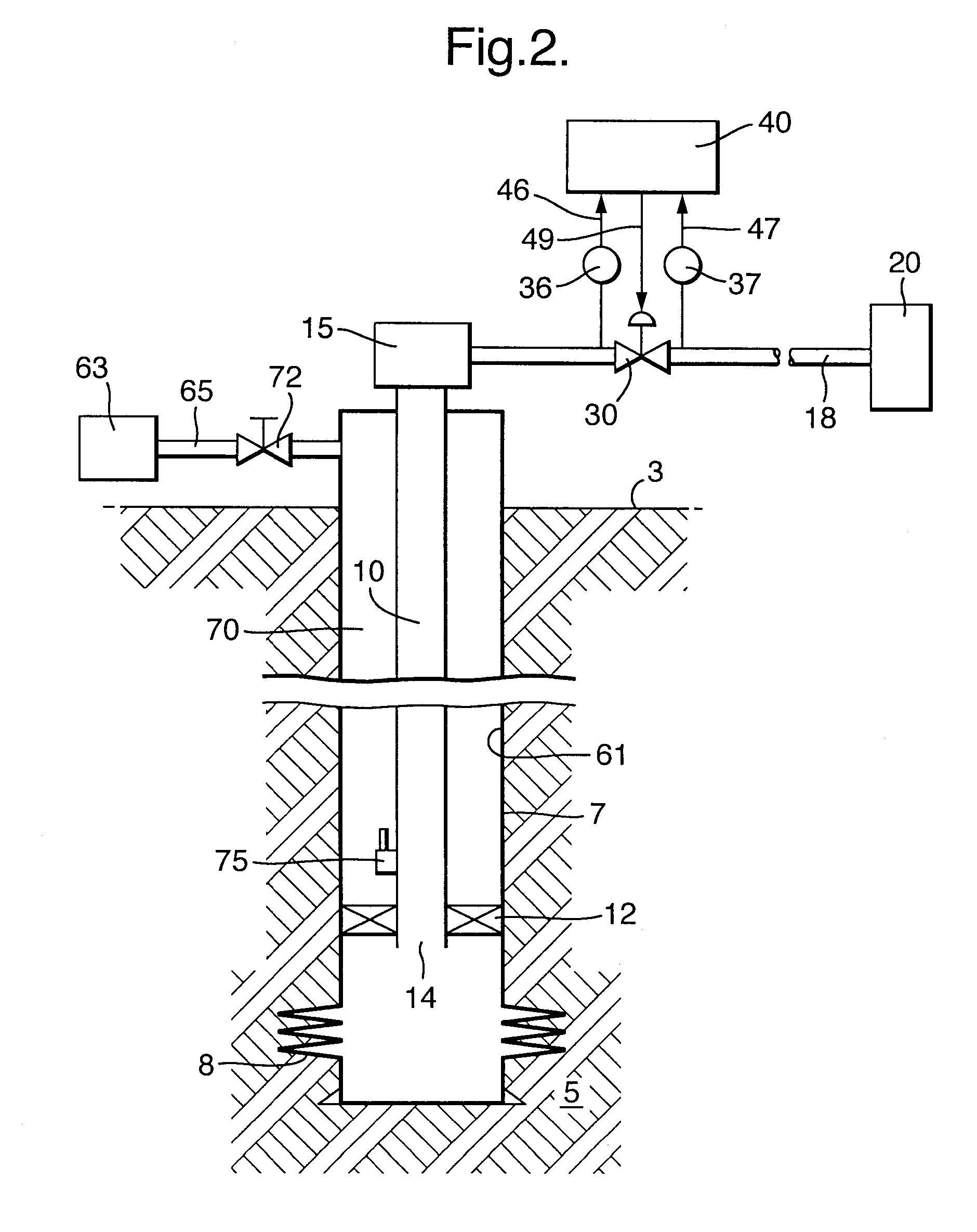Controlling The Flow Of A Multiphase Fluid From A Well
a multi-phase fluid and well technology, applied in the direction of fluid removal, survey, borehole/well accessories, etc., can solve the problems of flow stability, particular problems, and severe instabilities of the gas/liquid ratio of the fluid produced up the tubing
- Summary
- Abstract
- Description
- Claims
- Application Information
AI Technical Summary
Benefits of technology
Problems solved by technology
Method used
Image
Examples
Embodiment Construction
[0030] Reference is made to FIG. 1. The Figure shows a free-flowing well 1 extending from surface 3 into a subsurface formation 5. The well is provided with casing 7, and at the lower end of the well perforations 8 are arranged for receiving reservoir fluid into the well. Production tubing 10 is installed, separated by a packer 12 from the casing. The production tubing extends from its upstream end 14 to a wellhead 15 at surface, and from there through a flowline 18 to downstream processing equipment 20, e.g. including a gas / liquid separator. Along the flowline a control system is arranged, comprising a controllable variable valve 30, a flow restriction 32, pressure sensors 36 and 37 upstream and downstream of the flow restriction, and a controller 40 receiving input via lines 46,47 from the pressure sensors 36,37, and having an output via line 49 for a control signal to the controllable valve 30. In a particular embodiment (not shown, but see FIG. 2), the variable valve 30 is place...
PUM
 Login to View More
Login to View More Abstract
Description
Claims
Application Information
 Login to View More
Login to View More - R&D
- Intellectual Property
- Life Sciences
- Materials
- Tech Scout
- Unparalleled Data Quality
- Higher Quality Content
- 60% Fewer Hallucinations
Browse by: Latest US Patents, China's latest patents, Technical Efficacy Thesaurus, Application Domain, Technology Topic, Popular Technical Reports.
© 2025 PatSnap. All rights reserved.Legal|Privacy policy|Modern Slavery Act Transparency Statement|Sitemap|About US| Contact US: help@patsnap.com



